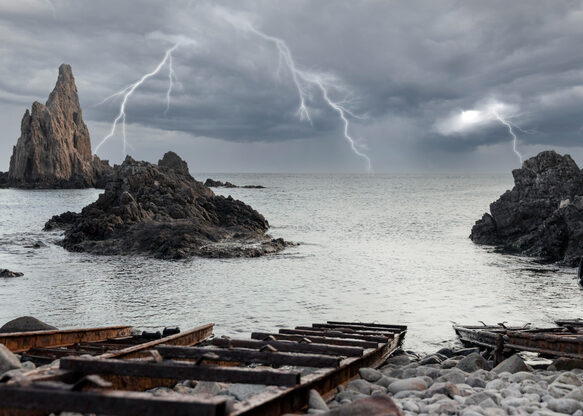Most lightning begins as an electrical disturbance inside a storm and travels through the clouds. Lightning can remain within the clouds or fly through the air and strike the ground. There are about 5 to 10 times more flashes in the clouds than on the ground.
Thus outdoor activities, including work, should be suspended at the first sign of bad weather. Here are some safety tips to avoid lightning damage while working outdoors:
- Monitor weather conditions, and If your hair is standing on its end, you are in lightning’s electric field.
- Just in case someone is caught outdoors when the storm is in the area, they should immediately seek appropriate shelter like in a building, low ground, in clumps of bushes, fully enclosed motor vehicle, etc.
- Alternately, if the lightning is extremely close and you are outside, put your feet together, duck your head on your knees, and crouch down low in a baseball catcher’s stance.
- Follow the 30/30 rule: if it takes less than 30 seconds to hear thunder after seeing a flash, then lightning is near enough to pose a threat.
- If a co-worker gets struck by lightning, administer first aid immediately and seek medical assistance. It is entirely safe to touch them.
Here are some safety tips to avoid lightning damage while working indoors:
Do you know that Lightning enters structures in three ways: a direct strike, through wires or pipes extending outside the structure, or through the ground? Once in a structure, lightning can travel through electrical appliances, phone lines, plumbing, and radio/television reception systems. Lightning can also travel through metal wires or bars in concrete walls or flooring.
- Stay off corded phones, computers, and other electrical equipment that directly connects you to electricity.
- Avoid plumbing, including sinks, baths, and faucets.
- Stay away from windows and doors, and stay off porches.
- Do not lie on concrete floors or lean against concrete walls.
A structural lightning protection system can neutralize direct lightning strikes. The main components of this system are air terminals (otherwise known as lightning rods), conductors linking the air terminals, and down conductors, which connect the air terminals to the earth. Seek customized solutions for lightning damage from Lightning Eliminators and Consultants Inc.


